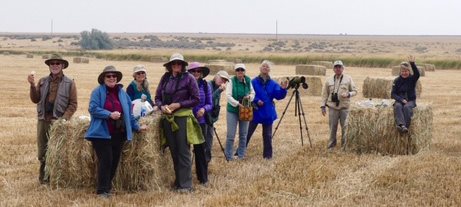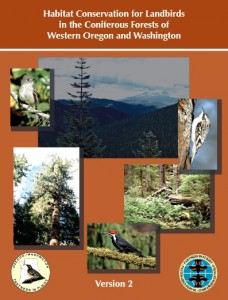Science-based Tools for Ecosystem Conservation
This article is the sixth installment in the series Achieving Partners in Flight Strategic Goals and Objectives.
An important bird conservation goal is to integrate Partners in Flight priorities and objectives into public agency natural resource planning and action. Partners in Flight uses a science-based method for bird conservation that incorporates a multi-species approach for assessing landbird vulnerabilities and needs, setting measurable conservation targets, describing management to meet these targets, and measuring the effectiveness of conservation actions. This approach can help land managers meet their ecosystem management needs. By aligning science, planning, and implementation among partners, we can more strategically implement actions that address priority science and habitat needs.
This strategic goal builds upon ten examples that illustrate both the process and science behind bird conservation throughout the western United States. These examples were recently featured in Informing Ecosystem Management: Science and Process for Landbird Conservation in the Western United States, a Biological Technical Publication published by the US Fish and Wildlife Service. The publication (1) describes how bird conservation and effectiveness monitoring can be integrated into land management guidelines with an emphasis on partnerships, and (2) presents case studies which highlight bird monitoring within the adaptive management framework. The publication emphasizes both the science of monitoring and the process of its integration into land management because both are necessary in order for effectiveness monitoring to fully impact decision making.
Collaborating with national and regional partners, Klamath Bird Observatory is working toward better integrating the Partners in Flight approach within federal management planning and implementation. At the 2012 annual meeting of the Association of Fish and Wildlife Agencies, we had an opportunity to present specific examples of how the tools developed by Partners in Flight can tie into natural resource management planning to an array of national resource management leaders. We then teamed up with partners in Oregon and Washington to take the message on the road, presenting a traveling workshop that provided training to a wider audience on the use of Partners in Flight tools for assessing conservation needs, setting quantifiable management objectives, evaluating management alternatives, and monitoring management effectiveness.
We are now following up with regional partners to provide guidance on the process for identifying species that can serve as indicators of habitat and/or ecosystem condition at geographic scales appropriate for various land management and monitoring purposes. We are working with Forest Service and Bureau of Land Management partners to develop projects that focus on using Partners in Flight’s conservation planning process in support of broad scaled and project level planning. The recently published Habitat Conservation for Landbirds in Coniferous Forests of Western Oregon and Washington (Oregon-Washington Partners in Flight) is serving to guide these efforts. This plan identifies 25 focal species that collectively represent the important habitat components of a functioning coniferous forest ecosystem.
 Donate
Donate
Advancing bird & habitat conservation through science, education, and partnerships
